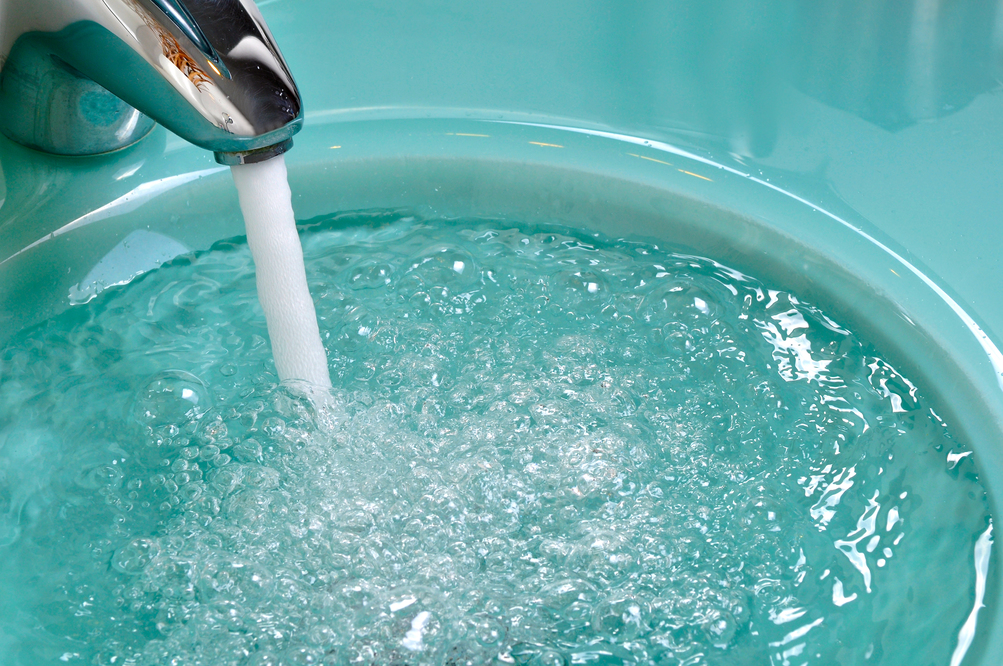Picking out a sink faucet is trickier than you might imagine. Faucets are available in different kinds of finishes, styles, sizes, and colors. Some thought should be given while picking a new faucet, as you will be using it for several years. It should match the theme and feel of the room and other fixtures. Four most common faucet types used in homes are disc faucets, ball faucets, cartridge faucets, and compression faucets. We will take a look at these in detail so that you can learn to differentiate between them and pick the right faucet for your sink.
Disc Faucets
Disk faucets are modern faucets, and they can be identified by their wide cylindrical body that houses a single lever. Inside these faucets, there’s a mixture chamber – referred to as pressure balance cartridge – where cold and hot water are mixed. At the bottom of the pressure balance cartridge, two ceramic disks rise and fall to control the water flow. Side-to-rotation of the faucet’s handle controls the temperature. Disc faucets are incredibly reliable, high quality, and require less frequent repairs.
Ball Faucets
Ball faucets are commonly used in kitchen sinks. They were the first kind of washerless faucet. Their ball-shaped, rounded cap identifies ball faucets right above the faucet spout and the single handle. The handle of these faucets controls a special metal or plastic ball inside the body of the faucet. This ball has slots or chambers in it as well as spring-loaded rubber seals and O-rings. The ball is critical to the flawless operation of the faucet. Depending on the position of the ball, temperature, flow of the water are controlled by the lever assembly. Since several different parts make up ball faucets, they tend to experience more problems – like leaks – than disc faucets and other washerless faucets.
Compression Faucets
Compression faucets have been around for a long time. They are generally found in older residential properties while their updated versions are used in utility sinks of newer homes. Although these faucets are least expensive, they are more prone to maintenance and leaks. Compression washer faucets have separate cold water and hot water. Moreover, their action requires you to tighten down the handle to stop the flow of water. Handles of compression faucets connect to two separate stem assemblies. Stem assemblies sit over the valve seat of the faucet, from where water flows into the compression faucet. When a faucet is closed, the stem assembly drives down to the faucet’s valve seat. Upon reaching the valve seat, the washer of the stem compresses over it, cutting off the flow of water. When the faucet is opened again, the appliance rises, allowing the water to flow.
Cartridge Faucets
Cartridge faucets look like compression faucets. However, the handles feel different when you are using the faucet. The washer of a cartridge faucet must be tightened down (compressed) to shut off the flow of water. The action with a cartridge faucet is consistent and smooth. The handle goes to the ‘on’ position from just a half turn. The faucet quickly turns off without any added pressure—the kind required for compression faucets.
Inside the cartridge faucet’s body, there is a hollow metal cartridge that seals the faucet and blocks water flow from cold and hot water lines. When the faucet is opened, the cartridge moves forward. When the cartridge runs, the water lines are unblocked and thus water starts flowing through the faucet. For temperature adjustment, the cartridge rotates slightly so that either the cold water intake is blocked or the hot water one.
How to Maintain Your Faucets?
If you want to ensure that your faucets don’t leak every so often, follow these simple maintenance tips:
·Regularly, use a wet cloth to clean your faucets. After cleaning, dry your faucet using a soft, dry cloth.
·Don’t use abrasive and hard cleaning materials and chemicals on your faucets. Such practices can damage them.
·While polishing, make sure to get a polish that will offer a uniform appearance and won’t retain fingerprints on the faucet.
·If your faucet starts leaking due to any reason, and you find it hard to change the affected parts of the faucet, leave the repair work to a professional.
·If you know how to repair your faucet by replacing affected components, make sure to purchase the right parts from a reliable manufacturer
·To remove hard water stain from your faucet, mix white vinegar and water, and apply the solution on affected areas. After a couple of minutes, wash off the faucet with clean water.
Final Thoughts
While there are some similarities between the faucets discussed above, you should be able to identify the faucet installed at your sink after going through the details of each. If your faucet is leaking and you don’t know how to fix it, don’t attempt to repair it yourself. You may end up making the problem worse than it actually is. Instead, rely on a professional plumber of Rowin Plumbing. They will identify the problem and fix your leaking faucet. To have your faucet checked and repaired by us, call us at 661 252 5757.

